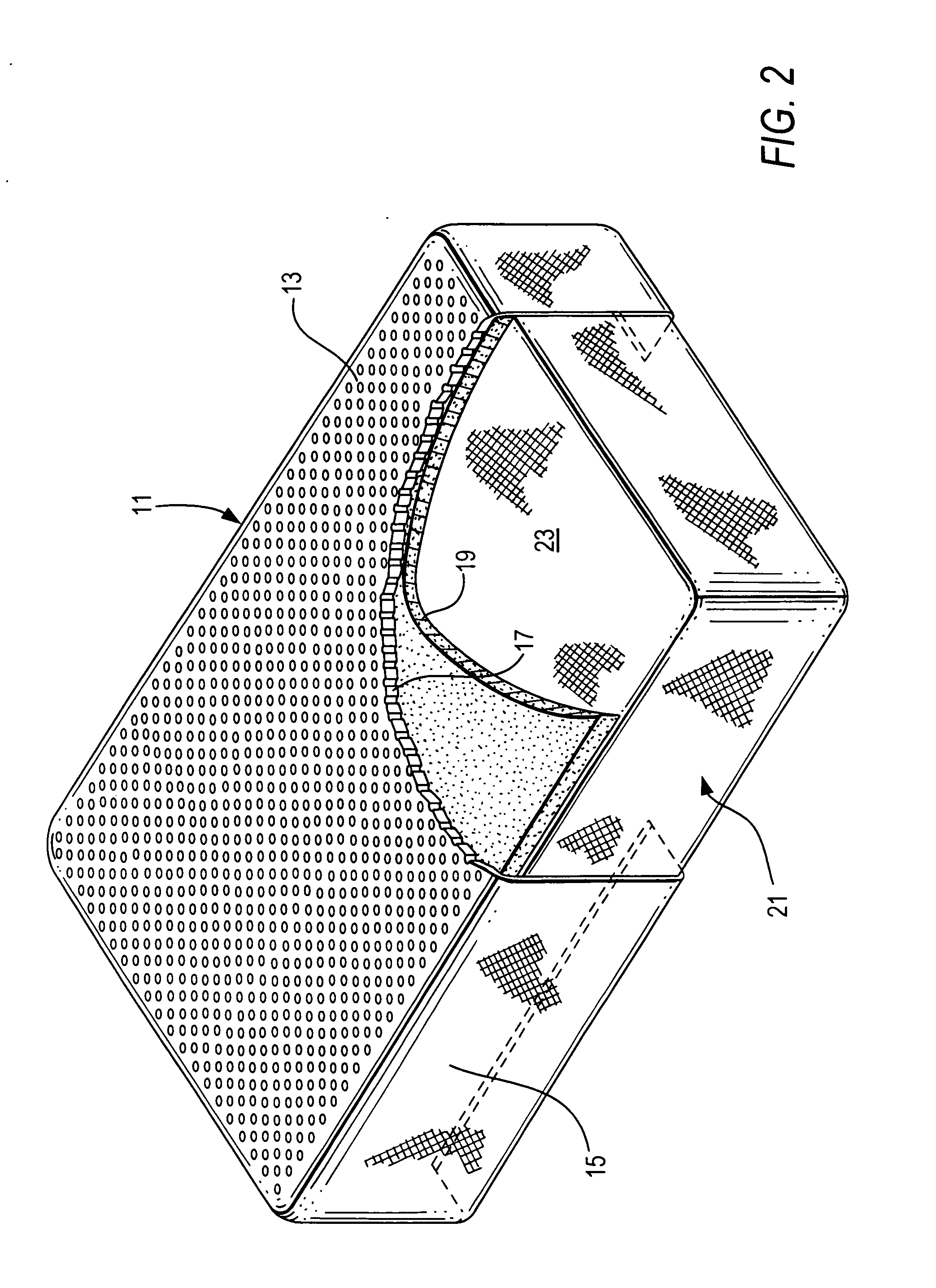Spacer fabric for mattress pad
a mattress pad and spacer fabric technology, applied in the field of infant mattress pads, can solve the problems of increasing difficult for infants to breathe, and putting infants at higher risk of sids, so as to reduce the risk of sudden infant death syndrome, reduce the risk of sids, and enhance comfort
- Summary
- Abstract
- Description
- Claims
- Application Information
AI Technical Summary
Benefits of technology
Problems solved by technology
Method used
Image
Examples
first embodiment
[0017] Now referring to FIG. 1, the inventive mattress pad is shown and generally indicated at 11. Mattress pad 11 is defined by a body portion 13 of substantially the same size as top portion 23 of mattress 21 as well as an integrally formed border portion 15. Body portion 13 is defined by a single layer 16 made of a spacer fabric material of the type described hereinabove, while border portion 15 is made from a solid non-spacer fabric material. In this regard, the fabric of border portion 15 will preferably have an elastic trim sewn therealong and has a width which substantially matches the wall thickness of mattress 21. Border portion 15 is not made of a spacer fabric material in order to reduce the use of spacer fabric in the construction of pad 11. Thus, body portion 13 of pad 11 is sized to be disposed substantially over top portion 23 of mattress 21. Moreover, because border portion 15 of pad 11 is elastic, pad 11 will have a snug fit over mattress 21, preventing the bunching...
second embodiment
[0018] In a second embodiment, as shown in FIG. 2, body portion 13 of mattress pad 11 is constructed with an upper layer 17 comprising a spacer fabric, as described hereinabove, and an underlying layer 19 of a breathable foam material for adding resiliency to body portion 13 of pad 11. Also, since body portion 13 incorporates underlying layer 17 of a foam material, production of pad 11 is made more cost-effective since it enables the overall use of a smaller percentage of spacer fabric in pad 11.
[0019] In accordance with the invention, body portion 13 of pad 11 has a thickness of between about 0.1 inches and 1.0 inches and preferably a thickness of between about 0.15 and 0.25 inches. If body portion 13 of pad 11 incorporates both an upper layer of spacer fabric and an underlying layer of a foam material, the upper layer will have a thickness of between about 0.1 and 0.5 inches (preferably between 0.15 and 0.25 inches), while the underlying layer will have a thickness of between abou...
PUM
 Login to View More
Login to View More Abstract
Description
Claims
Application Information
 Login to View More
Login to View More - R&D
- Intellectual Property
- Life Sciences
- Materials
- Tech Scout
- Unparalleled Data Quality
- Higher Quality Content
- 60% Fewer Hallucinations
Browse by: Latest US Patents, China's latest patents, Technical Efficacy Thesaurus, Application Domain, Technology Topic, Popular Technical Reports.
© 2025 PatSnap. All rights reserved.Legal|Privacy policy|Modern Slavery Act Transparency Statement|Sitemap|About US| Contact US: help@patsnap.com



